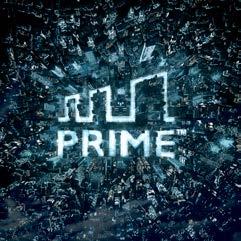
3 minute read
BRAND LANGUAGE
MAKING EVERY WORD COUNT
When people discuss what brands communicate and stand for, the focus is usually on visuals such as logotypes, corporate colour schemes and fonts. But we believe that the strongest brands are those that also use language in a way that conveys their distinctive essence. The visual and the verbal should work hand in hand to communicate what makes us different. Every word we use in our communications – every ad, every brochure, every website or press release – can affect the way the Husqvarna brand is perceived.
HUSQVARNA BRAND LANGUAGE
The written tone of voice is the personality of our brand expressed through the written word. It governs the style of textual communication.
USE CLEVER ONE-LINERS
The use of clever one-liners empowers the readers, and makes them feel intelligent.
NEVER BRAG
Our tone should never be arrogant or patronizing. We focus on what we do with great confidence, so we don’t need making use of our competitor’s weaknesses or mistakes. We are competent, intelligent and experts in our field – but we never brag or manifest our cleverness.
RATIONAL ARGUMENTS AND FACTS
As an expert in our field we are self-confident. We know what we are talking about. We are clear and use rational arguments. References are made to reliable sources and offer more and in-depth reading when possible. Text should always be well crafted and well thought out. Don’t be afraid of using longer texts when relevant and valuable for the readers. Avoid simple mistakes, spell-check texts and make sure the information is correct and up to date.
SHARE OUR KNOWLEDGE
We understand our customers’ everyday challenges. We guide them, and share
WELL-CRAFTED TEXTS
our knowledge.
GENERAL WRITING ADVICE
Crafting texts that work effectively is as important as crafting texts that express the brand personality.
USE EVERYDAY LANGUAGE
It’s always better to use a simple everyday term than a longer word with the same meaning.
MAKE IT EASY
You should always assume that your readers have other things they would rather do, than reading your text. It follows that you should do everything you can to make it easy for them to get what they need out of what they are reading.
BE ENGAGING
Here, we’re talking about going further than keeping it personal; we’re talking about the critical importance of making your readers feel that you understand their point of view, and are addressing their interests and priorities.
ASSUME INTELLIGENCE
There’s no easier way to alienate readers than by patronizing them, or by writing in a way that insults their intelligence. However little knowledge your audience may have of the subject in question, always assume that you are addressing intelligent individuals.
PRODUCT NAMES IN WRITING
When introducing a name in a text Husqvarna should always be included, for example Husqvarna K 760 or Husqvarna UpServices. If repeating the name in the same text or context, the shorter K 760 and UpServices are preferred. For further guidance, see the “Trade Mark Manual” on Connect – Group Information – Branding.
WRITE SEARCH-ENGINE OPTIMIZED
When writing for online media, you need to make your text search-engine optimized to get a higher ranking in the search engines. This means your text should not only be interesting and pleasant for the reader, but also contain the keywords that are relevant for your audience to use when they search for your type of content. F or best results, the keywords should be applied in the web address, title tag, heading, sub-headings and body copy. To figure out the best keywords, you need to think like the audience.
For help, use the online resources (i.e. keyword tools) available from Google, YouTube etc to get suggestions of relevant keywords and alternatives.
KEEP IT PERSONAL
Good writing sets out to create a relationship with the reader. One of the most important ways it does this is by addressing the reader directly and personally, using the first person (I or we) whenever possible, and even more importantly, by addressing the reader as “you”.
LESS IS MORE
Never tell your audience more than they need (or may be interested) to know. Is everything relevant from the reader’s point of view? If not, try to
make your text shorter.









